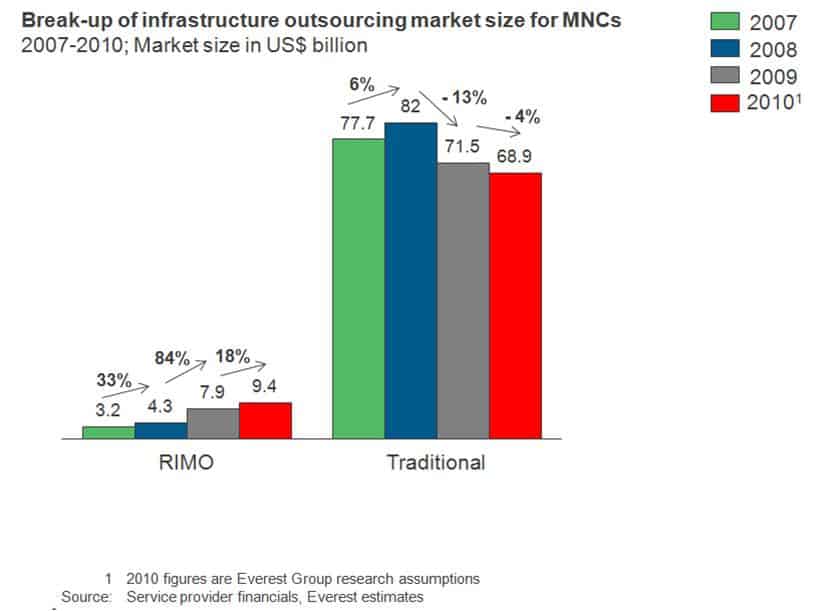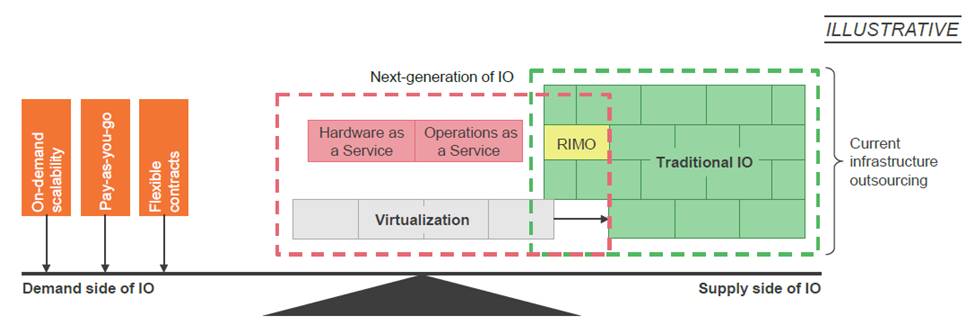
For the past few decades, Infrastructure Outsourcing (IO) was a proverbial elephant in the outsourcing room – huge deals, led primarily by multinational corporations (MNCs) and so capital and hardware intensive that some would beat the revenues of some medium-size businesses. At the turn of the 21st century, most non-MNC service providers, especially those based in India, did not even have Infrastructure Management Services (IMS) as a separate business line. Investments required for traditional IO were massive, and none of these providers had the capacity to manage the scale. Only application development & maintenance (ADM) had the scope, size and convenience to suit the global delivery model that the offshore providers championed.
However, as it turned out, IO was too big a piece of cake to cater to the appetite of just the MNCs, and soon offshore providers, cloud players and other boutique IO firms (like IPsoft) arrived on the scene with a commitment to stay in the marketplace. Soon thereafter, with the advent of next-generational concepts such as Remote Infrastructure Management Outsourcing (RIMO), cloud and consumerization, IO achieved some of that nimble-footedness we have come to associate only with ADM.
More buyers, especially the large ones, started to explore the scope-breakdown model that RIMO offered. The huge size and scope of traditional IO required little buyer focus on the nuances of their outsourcing strategy. RIMO provided the buyers with an option to focus decision making not only on opportunity costs but also on strategic choices, i.e., whether and what aspects of infrastructure to outsource. Though traditional IO continued to retain major share of the IO market, RIMO steadily supplanted itself as a viable option (see below).

While RIMO continues to be small as compared to traditional IO, it is a model that traditional IO providers can ignore only at their peril. Astra Zeneca’s recent replacement of IBM with HCL Technologies as its provider of data center hosting and migration is a case in point. Offshore providers may indeed be leveraging RIMO to enter the space dominated by MNCs for so long.
However, this is not a David vs. Goliath story. The IO market is witnessing numerous such evolutions, not only because of what providers are doing (e.g., RIMO and cloud) but also because of what buyers are demanding. The following illustration only partially exhibits the incredibly interesting forces currently influencing the IO market. How the balance tilts will be determined by the innovations that providers bring to the table to align with the growing strategic focus that buyers now have on IO.

Want to know how this story pans out? We’ve covered it in our latest research report on RIMO: Expanding the Wings of RIMO.
We would also love to hear your comments on what you think of RIMO and the related trends.










